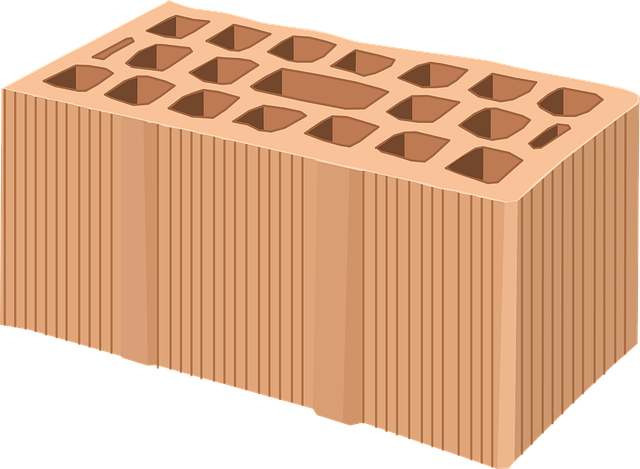A Foundation Inspection is a crucial step before repairs, assessing structural integrity through wall, floor, and exterior checks using advanced tools. Regular inspections detect early signs of foundation damage like cracks, ensuring prompt action to prevent deterioration. Various repair methods tailored to issues identified. Technology enhances accuracy with GPR and moisture meters. Choosing a reputable company with clear warranties is vital for maintaining home stability and protecting investments. Annual professional assessments fortify foundations in diverse conditions.
“Residential foundation repair is a crucial investment for any homeowner, ensuring structural integrity and long-term stability. This comprehensive guide delves into the essential aspects of addressing foundation issues, starting with the intricate foundation inspection process. Learn to identify common signs of damage, from cracks to uneven floors, and understand the various repair methods available. We explore the role of technology in enhancing precision and efficiency.
Additionally, discover the importance of selecting a reputable company and understanding guarantees and warranties. Equip yourself with preventive measures to safeguard your home’s foundation for years to come.”
Understanding Foundation Inspection Process

A thorough foundation inspection is paramount before undertaking any repair work, as it provides a clear picture of your home’s structural health. This process involves a detailed assessment of various factors such as cracks in walls and floors, uneven floors, and signs of water damage. Expert inspectors use advanced tools to detect even the slightest discrepancies that could indicate foundation issues.
During an inspection, professionals will also examine the exterior of the house for any signs of settlement or movement, including bowed walls, tilted chimneys, or doors that stick. They’ll check the perimeter drainage and look for moisture problems that can contribute to foundation damage. A comprehensive foundation inspection report will detail observed issues, potential causes, and recommendations for repair, often accompanied by a guarantee to ensure peace of mind for homeowners.
Common Signs of Residential Foundation Damage

Many homeowners overlook the signs of residential foundation damage, often until it becomes a costly issue. Regular foundation inspections are crucial to identifying potential problems early on. Some common indicators include visible cracks in walls or floors, doors that stick or swell, uneven floors, and bulging or shifting walls. These issues could be a result of settlement, soil erosion, excessive moisture, or structural weaknesses.
A comprehensive foundation inspection involves examining the exterior and interior of your home, checking for any signs of movement or damage. Experts will assess the condition of the foundation walls, footings, and support structures, ensuring everything is stable and secure. By addressing foundation problems promptly, homeowners can prevent further deterioration and costly repairs in the future.
Types of Foundation Repair Methods

When it comes to residential foundation repair, several methods exist tailored to different issues identified during a thorough foundation inspection. The process begins with assessing the type and severity of damage, which could range from cracks in concrete to uneven floors. For minor cracks and settling, non-invasive techniques like carbon fiber wrapping or epoxy injection can be effective, offering a long-term solution without extensive excavation.
More severe cases might require more substantial interventions such as piering or underpinning. Piering involves installing steel piers beneath the foundation to stabilize it, while underpinning includes adding support by building a new foundation below the existing one. These methods are particularly useful for houses with bowing walls or significant sinkage, ensuring the structure’s stability and longevity.
The Role of Technology in Foundation Repairs

Technology plays a pivotal role in modern foundation repair, offering both efficiency and precision during the inspection process. Advanced tools like ground-penetrating radar (GPR) and moisture meters provide non-invasive methods for assessing structural integrity. GPR can detect cracks and voids within concrete, while moisture meters help identify areas of high humidity, which may indicate potential problems. These technologies streamline the foundation inspection process, allowing professionals to quickly pinpoint issues and develop effective repair strategies.
Moreover, digital documentation and 3D modeling have transformed how repairs are planned and executed. High-resolution photos, detailed reports, and 3D models provide a comprehensive visual record of the foundation’s condition, ensuring accurate communication between contractors, engineers, and clients. This level of detail not only enhances repair precision but also extends guarantees, giving homeowners peace of mind knowing their investment is protected.
Choosing a Reputable Foundation Repair Company

Choosing a reputable foundation repair company is an essential step in ensuring your home’s structural integrity and protecting your investment. Start by requesting references and checking online reviews to gauge their customer satisfaction ratings and the quality of their work. You can also ask for evidence of proper licensing, insurance, and certifications, which demonstrate their professionalism and adherence to industry standards.
During the selection process, insist on a thorough foundation inspection. This initial assessment will help identify potential issues, allowing you to make informed decisions about repairs. Reputable companies should provide detailed reports, explaining findings and recommended solutions, ensuring transparency throughout the entire process.
Guarantee and Warranty: What to Look For

When considering residential foundation repair, understanding the guarantees and warranties offered is paramount. These assurances protect your investment and offer peace of mind. Look for companies that provide comprehensive coverage, including both structural integrity and material defects. A solid guarantee should encompass not just the initial repair but also any future issues arising from poor workmanship or materials.
During your foundation inspection, inquire about the warranty period, what is covered, and what steps are required to make a claim. Ensure the terms are clear and transparent. Reputable companies will be happy to discuss these details openly, demonstrating their commitment to long-term customer satisfaction.
Long-Term Maintenance for Stable Foundations

A solid foundation is the cornerstone of any home, and ensuring its longevity through regular maintenance is essential. One of the key aspects of residential foundation repair is focusing on long-term stability. This involves periodic foundation inspections to identify potential issues early on. By catching problems such as settling, cracks, or shifts in the foundation before they become severe, homeowners can avoid costly repairs down the line.
Regular inspections allow for proactive measures like reinforcing supporting structures, addressing moisture intrusions, and making necessary adjustments to ensure the foundation’s integrity. Moreover, a comprehensive foundation inspection provides valuable insights into the overall health of the home’s structural system, enabling homeowners and professionals to make informed decisions about future maintenance and repairs, thus guaranteeing a stable and secure living environment for years to come.
Preventive Measures for Future Foundation Issues

Regular foundation inspections are a proactive step in preventing future issues. Homeowners should schedule professional assessments at least once a year, especially in regions with varying weather conditions and soil types. These inspections can identify potential problems early on, such as settlement cracks, uneven floors, or shifting walls, which may indicate deeper structural damage. By catching these signs early, homeowners can take immediate action to repair the foundation before more severe issues arise.
During an inspection, experts will examine various factors like soil stability, drainage around the property, and the overall condition of the foundation. They can also provide recommendations for improvements, such as reinforcing support beams, adding structural anchors, or implementing better drainage systems. Taking these preventive measures ensures that your home’s foundation remains stable and secure, saving you from costly repairs in the long run.
